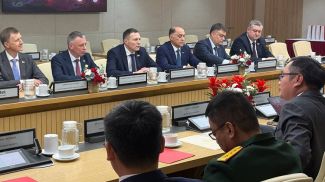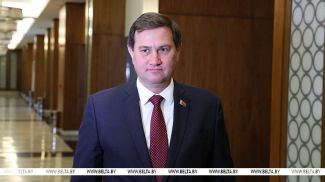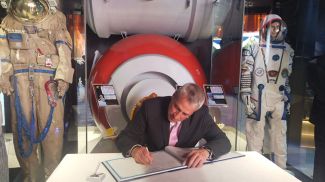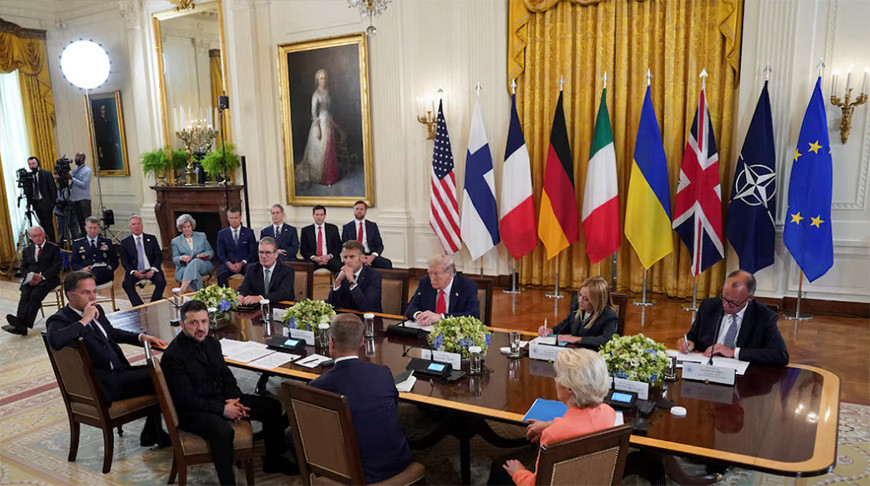
A meeting between U.S. President Donald Trump and Vladimir Zelensky, alongside European leaders, took place in Washington. This was preceded by the bilateral summit of U.S. and Russian leaders in Alaska. The central theme of the negotiations was pathways to resolving the Ukrainian conflict.
Very little information is currently being made public. Therefore, the announcements of upcoming meetings are the only thing indicating progress in the negotiations. It is precisely such a meeting that Trump announced during the summit in Washington, namely, trilateral negotiations between Russia, the United States and Ukraine. Without substantial agreements, decisions, or concrete outlines (even if only between two of the three parties) holding such a meeting would be pointless. However, there has been no official confirmation from the Kremlin regarding participation in the trilateral talks. Moscow's response will provide additional clarity.
Regarding the Washington meeting, judging by the statements, the discussions primarily focused on territorial issues and security guarantees for Ukraine. Again, everything was behind closed doors and no details were shared with the media. Interestingly, a large map of Ukraine including Russian-controlled territories was set up in the Oval Office of the White House, prior to the start of the closed-door negotiations between Trump and Zelensky.
Subsequently, Zelensky stated that he is prepared to discuss territorial issues at a meeting with Russian President Vladimir Putin. Zelensky also announced that the details of security guarantees for Ukraine would be finalized within 10 days. Furthermore, he expressed a desire to secure a $90 billion aid package from allies as part of these security assurances.

Simultaneously, Trump made it clear that security guarantees would be provided by European countries in coordination with the United States. This wording is unlikely to be accidental. The distinction between the concepts of "in coordination with" and "on equal footing with" is quite evident.
Overall, Trump spoke in maximally vague terms before the cameras and left some journalists' questions unanswered. However, regarding Ukraine's potential NATO membership, the U.S. leader was categorical: "No going into NATO by Ukraine." As is known, this position diverges from the stance of a number of the NATO’s European members.
The potential deployment of European and U.S. troops to Ukraine, which is another contentious issue, was not discussed at the Washington summit. At least, that is what NATO Secretary General Mark Rutte stated. Meanwhile, European leaders have actively pushed this topic in recent days. Among them is French President Emmanuel Macron, who described the deployment of Western troops to Ukraine as one of the "pillars of guarantees" for Kiev and intended to discuss this matter during negotiations with Trump.
European leaders again attempted to push through the idea of achieving a ceasefire, halting hostilities, and then transitioning to preparing a comprehensive peace agreement. As is known, Moscow rejects the proposal for a ceasefire and wants to move directly to an agreement. Yesterday, Trump made it clear that he shares the Kremlin's view on this issue. He specifically stated that a ceasefire could grant a strategic advantage to one side, allowing it to regroup. Notably, Zelensky in Washington declared that he would not insist on a ceasefire as a precondition for further negotiations, which was a departure from his earlier position.

Well, as it was noted above, the primary outcome of the summit was Trump's announcement regarding preparations for a meeting with Putin and Zelensky. Notably, the U.S. leader called his Russian counterpart during the summit to discuss certain details or proposals that emerged from the meeting with the Europeans. This appears highly symbolic, indicating that instead of egocentric monologues, the time for dialogue has arrived, with Trump choosing the role of mediator or arbiter in this process, rather than that of a direct participant in the clashes.
“At the conclusion of the meetings, I called President Putin, and began the arrangements for a meeting, at a location to be determined, between President Putin and President Zelensky. After that meeting takes place, we will have a Trilat, which would be the two Presidents, plus myself,” Trump said in his Truth Social post, calling it “a very good, early step for a War that has been going on for almost four years.” He also noted that “The Alaska summit reinforced my belief that while difficult, peace is within reach."
Later, German Chancellor Friedrich Merz stated that a meeting between Putin and Zelensky could take place within two weeks. Zelensky, in turn, announced that the Russian side had proposed first holding a bilateral meeting with Ukraine, followed by a trilateral meeting including the United States Zelensky has agreed to this format. There has been no comment from the Kremlin yet.

To understand where the situation is heading and what goals and leverage each side has, it is essential to examine the geopolitical and economic context. As of now, the landscape is as follows.
Firstly, Trump’s ultimatum, which seemed to be an unexpected gift to the Western ‘war party’, has failed. We will not delve into Trump’s motives here (much has already been said on that) but recall that the ultimatum threatened the imposition of draconian tariffs against Russia and its trading partners should Moscow refuse to sign a peace agreement with Kiev by 8 August. The Trump administration failed to pressure neither Russia nor India and China, its key trading partners. Moreover, imposing tariffs would have meant unleashing a large-scale trade war with the world's largest economies. Trump found himself in a difficult position but extricated himself rather elegantly, through the summit with Putin.
Secondly, it was Russia that held a strong position at the summit in the USA – economically stable, possessing military superiority, and, as the ultimatum situation demonstrated, having solid ties with major non-Western countries. One might assume that such a position allows Moscow to present its own list of demands. However, it is worth considering that Russia's original goal is to ensure its own security in a context where the NATO military bloc has approached its borders. Even before the start of the Ukrainian conflict, Moscow called on the West to form a new security architecture with guarantees for each side. And Russia continues to insist on this. Yet, creating a stable security architecture without considering the interests of all participants is impossible. Therefore, it is logical that the Russian leadership is proposing compromises, including on the issue of providing guarantees to Ukraine. And evidently, this is something the Trump administration is willing to work with and promote in negotiation formats with Kiev and the Europeans. At the very least, the U.S. president's statements following the Alaska summit indicate that Washington has finally heard Moscow's position and is prepared to use it as a starting point.
But can the Americans simply step aside? This option is possible, but it is far from ideal for Washington. The situation is nuanced, ranging from the U.S. domestic political landscape, where failure on the Ukrainian front could be weaponized by Trump's opponents, to Washington's broader geopolitical plans. The latter, as openly discussed by American think tanks, involve a strategic pivot to the Indo-Pacific region. This explains the talks about potentially reducing U.S. troop numbers in Europe. In this context, it is logical to secure the rear by definitively ending the West’s proxy war with Russia. It is also worth noting that Russia holds distinct strategic value for the USA, both in terms of economic cooperation and as a critical actor in the emerging U.S.-Russia-China triangle.
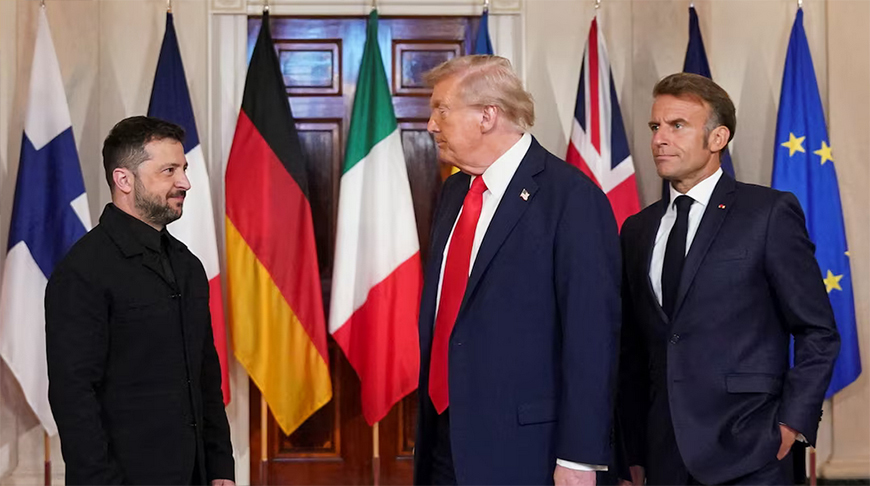
Thus, the role of a mediator between Russia on one side and Europe/Kiev on the other, while challenging, is necessary for the USA. It is also a unique opportunity: though the Americans (under the previous administration) initiated this proxy conflict, they now have a chance to exit it as peacemakers.
But what, then, can the USA actually do to facilitate a peaceful settlement of the conflict? In reality, a great deal. And this is not solely about the Ukrainian conflict. It is about the broader confrontation between the West and Russia. Recent events have demonstrated that Washington possesses far greater leverage over Kiev and European elites than it does over Russia, China, or India. Without financial and military aid, without satellite imagery and intelligence data, the Ukrainian army would be paralyzed. Of course, this would likely result in significant advances by Russian troops, which is, again, not in Washington's interest. But in Trump's arsenal are also tariffs, sanctions, and tools of political and diplomatic pressure, applicable both to Kiev and to those in Europe eager to continue the conflict. Just a couple of months ago, Trump reacted quite aggressively to Moscow's statements questioning Zelensky's legitimacy. Yet, at yesterday's summit, Trump himself subtly ironized about elections in Ukraine, even suggesting that the USA might cancel its own presidential election in 3.5 years due to a military conflict. Trump has his own unique set of persuasive methods, and he will undoubtedly use them.
Yet there is another party in this conflict that, while lacking a strong position, is actively attempting to throw a wrench in the works: Europe. More precisely, the European “war party” embodied by Macron, Merz, British Prime Minister Keir Starmer, and EC head Ursula von der Leyen. Polish Prime Minister Donald Tusk can also be included here, though Warsaw has increasingly been sidelined lately. They weren't even invited to Washington, which sparked a major scandal within Poland's political elite, with Polish political scientists declaring their country's marginalization.
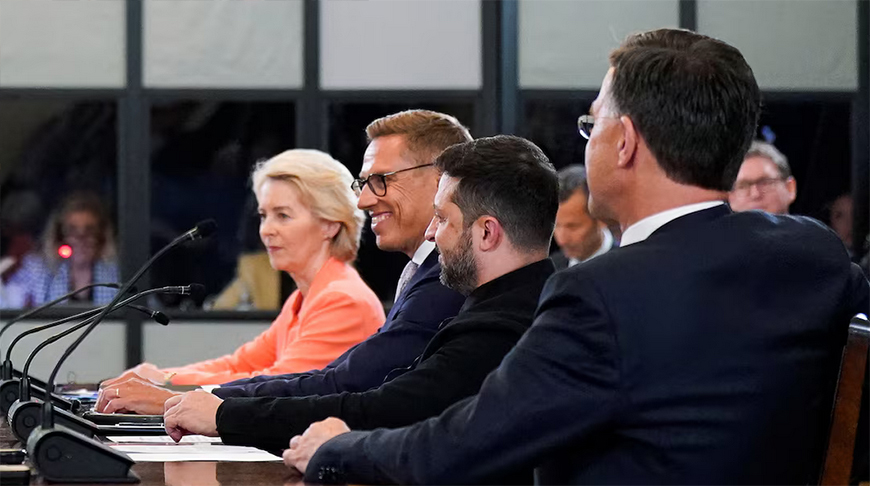
Overall, this entire group is interested in continuing the fight. Each has their own reasons: some dream of weakening Russia, others hope to divvy up the EU budget allocated for militarization, and some are terrified by the thought that once the conflict ends, the focus will shift to internal problems. It must be admitted that in pre-war times, the lives of Europeans and the state of the European economy were far better than they are now. Furthermore, European leaders fear that the USA might reduce its military presence on the continent. In that case, they would actually have to direct money toward strengthening defense rather than into their own pockets.
For European elites, the preferred scenario is to push Trump back to his own ultimatum, ideally while drawing the USA into a global trade war. Under such circumstances, they could also secure trade bonuses for themselves, after all, the Americans wouldn’t wage economic war on all fronts simultaneously. But to turn Trump against Russia, conditions must be created where tensions ignite. One option is to convince Trump to support proposals for resolving the Ukrainian crisis that Moscow would categorically reject. These include deploying NATO troops on Ukrainian territory, transforming Ukraine, in von der Leyen’s words, into a “steel porcupine” armed to the teeth, or endorsing Ukraine’s right to join NATO. All these ideas are currently circulating, and they share one goal: to derail the negotiation process while blaming Russia. However, Trump is clearly not one to be easily manipulated. He has already tested the tactic of ultimatums and understands who it works on, and who it backfires on.

Polish Prime Minister Tusk, observing the spectacle from the sidelines, has concluded that the game for Ukraine’s future has entered its decisive stage. Apparently, for Tusk and his Western colleagues, the situation in Ukraine and the daily loss of human lives seem like mere gameplay. But time for games is truly running out. It’s time to return to reality, to return to peace, no matter how difficult it may be.
Vita Khanatayeva, photos by Reuters
BelTA




